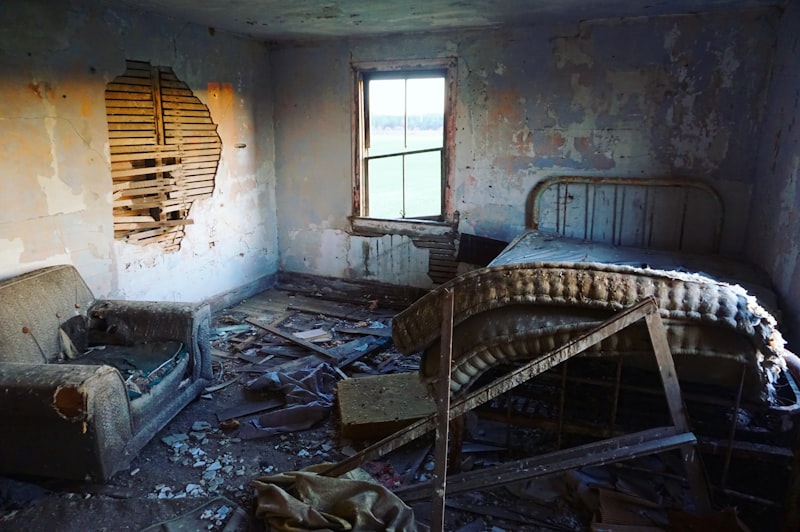What sets Tomb Mold apart is their ability to weave complex narratives within their music. It’s not just about heavy distortion and speed; it’s about storytelling. Their compositions unfold like chapters in an arcane tome, revealing tales of ancient civilizations, cosmic horrors, and existential dread.
Listening to Tomb Mold is akin to deciphering hieroglyphs on a tomb wall—you’re drawn into deciphering their musical language, uncovering layers of meaning with each repeated listen. Their music challenges you to confront the unknown, to embrace the darkness within and without.
In a world where music often follows predictable paths, Tomb Mold stands as a monolith of creativity and authenticity. They remind us that music can still be a journey, an exploration into the depths of human imagination and emotion. So, dive into the world of Tomb Mold, and let their music transport you to realms where shadows dance and echoes linger.
Unveiling the Mystique of Tomb Mold: Secrets of Ancient Burial Practices
Have you ever wondered about the mysteries hidden within ancient burial practices? One such enigma that archaeologists and historians have delved into is tomb mold. This peculiar substance, often found in tombs and burial sites dating back centuries, holds clues to the rituals and beliefs of ancient civilizations.
Imagine stepping into a dimly lit chamber, untouched for centuries, only to find delicate filaments of mold spreading across the walls. It’s not just any mold; it’s tomb mold, a silent witness to the rituals performed by our ancestors. This mold isn’t just a biological curiosity; it’s a time capsule preserving the secrets of past cultures.
Ancient Egyptians, Greeks, and even civilizations as far-reaching as the Maya and Inca had distinct burial practices. Tomb mold often appears where these rituals were conducted, serving as a testament to the reverence and care given to the deceased. Its presence suggests a complex interplay between life and death, where rituals ensured safe passage to the afterlife.
But what makes tomb mold so intriguing? Its formation is linked to environmental conditions and the materials used in burial rites. In damp, dark tombs, organic matter decomposes, creating fertile ground for mold growth. Yet, tomb mold isn’t just a product of decay; it symbolizes the cycle of life and the continuity of cultural practices across generations.
Think of tomb mold as a storyteller, whispering tales of ancient ceremonies and beliefs. Its presence sparks questions: What rituals were performed here? What did these cultures believe about the afterlife? Tomb mold invites us to explore these mysteries, bridging the gap between past and present.
Tomb mold isn’t merely a scientific curiosity; it’s a cultural artifact that connects us to our ancestors’ spiritual practices. As we uncover more about its role in ancient burial rites, we gain a deeper understanding of human history and the enduring legacy of our forebears.
Exploring Tomb Mold: Nature’s Silent Architects of Decay
Tomb mold, scientifically known as Stachybotrys chartarum, is a fascinating organism that thrives in dark, damp environments where organic matter is abundant. Found commonly in places like old buildings, decaying wood, and even on decaying organic matter in forests, tomb mold plays a crucial role in breaking down dead materials. Imagine it as nature’s cleanup crew, silently at work, recycling nutrients back into the ecosystem.
One of the most striking features of tomb mold is its appearance. Often dark greenish-black in color, it spreads across surfaces in a distinctive pattern resembling soot or smoke stains. This unique appearance has earned it the nickname “black mold.” Despite its ominous name, tomb mold serves a vital ecological function by decomposing cellulose-rich materials like wood and paper.
In terms of its lifecycle, tomb mold reproduces through spores that are dispersed into the air. These spores can survive harsh conditions and remain dormant until they find a suitable environment to grow. Once settled, tomb mold releases enzymes that break down organic matter into simpler compounds, which other organisms can then utilize.
The presence of tomb mold isn’t always a cause for alarm, but it does indicate damp conditions that could potentially lead to structural issues or health concerns if not addressed. Its ability to grow rapidly in moist environments makes it a challenge for homeowners and conservationists alike.
To manage tomb mold, it’s crucial to control moisture levels and ensure proper ventilation in indoor spaces. Prevention is often the best strategy against its growth. Regular inspections and prompt remediation of water leaks can significantly reduce the likelihood of encountering tomb mold issues.
Tomb mold may be nature’s silent architect of decay, but its role in the ecosystem is indispensable. By breaking down organic matter, it contributes to nutrient cycling and helps maintain ecological balance. Understanding its habits and habitat can empower us to coexist with this fascinating organism while respecting its ecological role.
From Tomb to Laboratory: How Mold Reveals History’s Hidden Stories
Mold, with its insidious growth, finds a surprising niche in the realm of historical discovery. Its ability to thrive in damp, dark environments makes it a stealthy inhabitant of ancient tombs and ruins. When researchers stumble upon these hidden chambers, they encounter more than just decay; they encounter a microscopic treasure trove of historical clues.
But how does mold reveal history’s secrets? As mold grows, it feasts upon organic materials such as wood, fabric, or even remnants of food left in burial sites. In doing so, it leaves behind telltale signs of its presence. Scientists can analyze these traces to deduce what life was like centuries ago. For instance, mold patterns on textiles can indicate the type of fabrics used or the climatic conditions of the era. Meanwhile, mold found on ancient food remnants offers insights into diets and culinary practices of past civilizations.
The laboratory becomes the stage where these ancient stories come to life. Scientists carefully collect mold samples from archaeological sites and subject them to rigorous analysis. Using advanced techniques like DNA sequencing and isotopic analysis, they piece together a detailed narrative of the past. It’s akin to solving a complex puzzle where each mold spore is a piece that fits into the larger historical picture.
Moreover, mold doesn’t just reveal the mundane aspects of daily life. In some cases, it uncovers extraordinary events buried in history’s annals. For example, mold found in a forgotten library might preserve traces of texts or manuscripts long thought lost. These discoveries can reshape our understanding of literature, philosophy, and scientific thought from ages past.
The Science Behind Tomb Mold: Decay, Discovery, and Preservation
Imagine stumbling upon an ancient tomb hidden beneath layers of earth and debris. Inside, among the remnants of a once-glorious past, you find traces of tomb mold. This mold isn’t just an ordinary fungus; it’s a storyteller frozen in time, silently narrating the passage of centuries.
The science behind tomb mold revolves around its role in taphonomy—the study of how organisms decay and fossilize over time. In burial environments, microorganisms break down organic materials, releasing nutrients back into the soil. Tomb mold thrives in these conditions, where moisture and darkness create a perfect breeding ground.
Discovery of tomb mold isn’t merely about spotting greenish patches on ancient artifacts. It involves careful analysis by archaeologists and microbiologists who study its growth patterns and interactions with surrounding materials. Through this study, researchers gain valuable insights into past climates, burial rituals, and even the health of ancient populations.

Tomb Mold: Nature’s Time Capsule or Archaeological Foe?
Imagine stumbling upon an ancient tomb, its interior shrouded in darkness, and discovering not just artifacts of a bygone era but also a blanket of mold covering surfaces untouched by human hands for centuries. This mold, typically comprising various fungal species, thrives in the microclimates of tombs, fueled by humidity and organic material.
From an archaeological perspective, tomb mold poses both challenges and intriguing opportunities. Its growth can obscure and even damage delicate artifacts, yet its presence also indicates a stable environment sheltering relics from more destructive elements like light and air. In essence, tomb mold acts as a natural guardian, inadvertently shielding artifacts from rapid deterioration, offering glimpses into ancient civilizations untouched by time.
The relationship between tomb mold and archaeologists is one of cautious respect. While its removal may be necessary for preservation efforts, its very existence underscores the resilience of life in unexpected places. This fungal ecosystem, adapted to survive in conditions hostile to many organisms, serves as a reminder of nature’s ability to thrive even in the most unlikely settings.
Tomb mold, often viewed as an archaeological foe due to its potential to obscure historical artifacts, paradoxically serves as a natural preserver of ancient treasures. Its role as nature’s time capsule highlights the complex interplay between decay and conservation in the study of human history, offering archaeologists a unique lens through which to explore and understand the past.
Ancient Tombs and Modern Science: Decrypting the Role of Mold
In the context of ancient tombs, mold serves as a natural timekeeper and a biological archive. Its presence can reveal valuable insights into the environment, construction materials, and even burial practices of past civilizations. Imagine mold as a silent witness, preserving clues about the past within its microbial structure.
When archaeologists discover mold inside a tomb, they don’t just see a patch of fungus; they see potential answers. The type of mold and its growth pattern can indicate humidity levels, temperature changes, and the presence of organic materials such as wood or textiles. This information helps reconstruct the conditions in which ancient people lived and were buried.
Moreover, mold can harbor ancient DNA, pollen, and other microscopic evidence that sheds light on diet, health, and genetic ancestry. Researchers can analyze these biological remnants to piece together a more comprehensive picture of ancient societies, their customs, and their interactions with the environment.
In essence, mold transforms from a mere biological occurrence into a vital tool for scientific inquiry in archaeology. It underscores the intricate relationship between past civilizations and the natural world, offering insights that traditional archaeological methods alone cannot provide.
Frequently Asked Questions
What are the methods for treating tomb mold-infested areas?
Learn effective methods to treat tomb mold-infested areas. Discover step-by-step procedures and specialized techniques for removing mold safely and preventing its recurrence.
How can tomb mold be prevented and removed?
Learn effective methods to prevent and remove tomb mold. Follow proper ventilation and humidity control measures in enclosed spaces to inhibit mold growth. Regularly inspect and clean affected areas with mold-specific cleaners to ensure thorough removal.
What is tomb mold and where is it found?
Discover what tomb mold is and where it can be found. Tomb mold is a type of fungus that typically grows in dark, damp environments such as old crypts, catacombs, and burial sites. It thrives on organic matter and contributes to the natural decomposition process. Understanding its habitat and characteristics can aid in preservation efforts and environmental studies.
Is tomb mold dangerous to human health?
Learn about the potential health risks associated with tomb mold and how to identify and mitigate them.
How does tomb mold affect historical artifacts and structures?
Learn how tomb mold impacts historical artifacts and structures, exploring its effects on preservation and structural integrity. Discover preventive measures and restoration techniques.









One thought on “Tomb Mold”